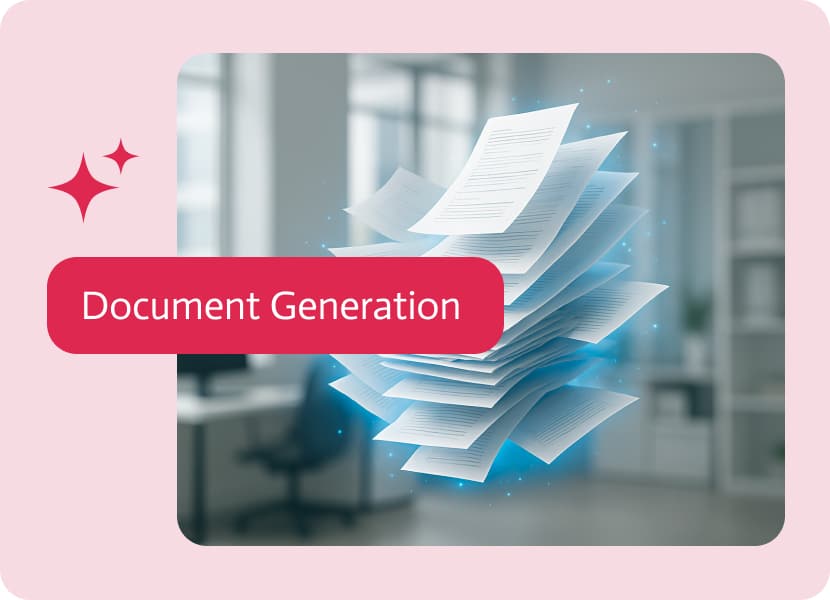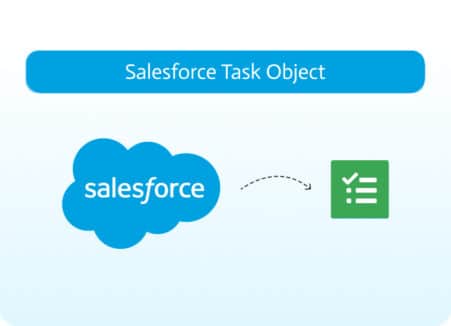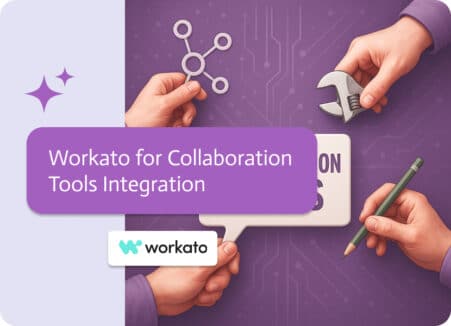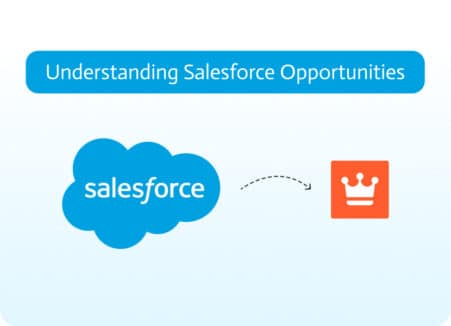

Document Generation: What It Is and Why Your Business Needs It
In a nutshell, document generation is a completely new method for producing professional, branded business documents. The basic idea is to change data from your systems, whether it is stored in spreadsheets, CRMs, or ERPs, into professional, branded documents that are prepared for distribution almost immediately upon clicking. You simply need to set up a template once and connect your data sources, and the system generates contracts, proposals, invoices, reports, or basically whatever document you may need automatically, all without you having to copy and paste every detail yourself. Even if you’ve never touched a line of code, now anyone can do it.
This isn’t just another 90s mail merge gadget. AI-powered document generation comprehends the relationships between the information you supply, applies conditional reasoning dynamically, and prepares documents that change according to the actual state of your systems. It effortlessly manages intricate parent-child relationships throughout your database, connects to more than 500 enterprise apps, and simultaneously retrieves real-time data from several sources.
You could turn a messy collection of customer data into a beautiful, branded quote with terms that adjust based on order volume, payment history, and contract type. That’s AI-powered document generation.
How Is Document Generation Changing the Future?
The End of Copy-Paste Hell
When was the last time you created a proposal from beginning to end up? You probably opened the version from last month, changed the pricing table, changed the terms, changed the client names (I hope you caught them all), changed the terms, reformatted everything because the fonts went awry, and then, after sending it, you noticed a typo in the signature block.
That whole worst-case scenario can be avoided with document generation. Once you have personalized fields of data set up in your template, all subsequent documents will pull up current, accurate data straight from your source systems. All of the following information automatically enters: customer name, address, purchase history, pricing tiers, terms of payment, and product specifications.
Teams that handle high document volumes, law firms cranking out contracts, HR departments distributing policies, and sales teams sending quotes are saving dozens of hours every week. But it’s not just about time. It’s about sanity. When you stop wrestling with documents and start generating them, you get your mental bandwidth back for actual strategic work.
Brand Consistency That Actually Sticks
Every company says they care about brand consistency. Most companies have a brand guide gathering dust on a shared drive. The reality? Documents go out the door with mismatched logos, random font choices, and that one sales rep who still uses the color scheme from three rebrand cycles ago.
At the template stage, document generation secures your brand’s guidelines. The template architecture includes fonts, colors, logos, spacing, footer text, and legal disclaimers. If you create a thousand documents, they will all appear to have been created by the same design studio, which they actually did.
Brand consistency is more than just aesthetics for organizations with numerous teams, departments, or regional offices; it’s governance. Legal can approve the language, marketing can control the templates, and each team creates documents that adhere to both. No more “Let me just throw something together real quick” or rogue PowerPoints.
Risk Mitigation Through Automation
Here’s where document generation gets serious: compliance and legal risk. Every manual document is a potential liability. Wrong contract terms for that jurisdiction? A lawsuit waiting to happen. Forgot to include the mandatory disclosure? Regulatory violation. Copy-pasted the wrong pricing structure? Revenue leakage or customer dispute. When documents are generated from validated templates with conditional logic, you eliminate most of these risks.
For industries that are inundated by regulations, this is not only valuable but revolutionary as well. Every contract that is sent out has already been reviewed because legal teams can directly encode their knowledge into templates. Depending on the procedure type, medical professionals can create patient documents that automatically contain the appropriate consent forms. Without a compliance officer going over each disclosure document, financial institutions can create disclosures that adjust to the risk profiles of their clients and legal requirements.
Verification evidence is also important. These days, document generation platforms keep track of who made what, when, with what data sources, and with which template version. You’re not sifting through emails attempting to piece together what transpired when regulators arrive or litigation begins. You have an entire log.
Real-Time Data, Real-Time Documents
Static documents died the moment your business started moving faster than quarterly planning cycles. You can’t send a sales proposal with last week’s pricing, a customer report with yesterday’s data, or an invoice that doesn’t reflect this morning’s delivery.
Systems for creating documents pull information from your record systems in real time. When that executive territory report is generated, it displays the pipeline for today, the deals that were closed this week, and the forecasts for the current quarter, not the date that the spreadsheet was last updated. A customer’s actual purchase history, the terms of the current contract, and the availability of inventory in real time are all included when creating a proposal for them.
This real-time feature opens up completely new possibilities. It is possible to produce dashboard-style reports in real time that stakeholders genuinely trust. Quotes that show dynamic pricing according to the demand at the moment can be sent. Without waiting for the month-end close, you can create financial documents that include the most recent transactions.
What’s Changing Right Now in Document Generation?
Intelligent Data Mapping
Early document automation meant writing complex queries, building middleware, and explaining to an integration consultant exactly which field in System A should populate which merge tag in Template B. It took months to set up and seemed to break every time someone renamed a database column.
The new, more modern AI-powered systems like Noca, will intelligently find and pull data directly from your enterprise systems. Point it at your Salesforce instance, and it discovers accounts, contacts, opportunities, objects, and all their relationships. You don’t have to write a single formula or pick each thing by hand. The system maps the data architecture itself, and lets you just drag and drop whatever you want into your templates.
Instead of writing IF/THEN statements in some proprietary scripting language, you set conditions in plain language: “Include Section 5 if Contract Value exceeds $100,000” or “Use payment terms B if customer has a credit rating above 700.” The system translates that into the logic that drives document variation.
Deploy Once, Access Everywhere
When operations needed something, the old method usually involved creating a Word document template for the sales personnel, rebuilding an Excel version for the finance department, and then coming up with yet another one-time solution. It’s impossible to control template sprawl, even more so when you multiply that by the number of different document types, teams, and geographical areas.
Once a template is created and deployed to the system, anyone who needs to get into it can access it from any location. You’re also allowed to use the same library of templates when you want to generate documents for your CRM, ERP, project management system, and custom internal portal.
Batch processing works in much the same way. Do you need to generate employment agreements for 50 new hires? Just pick the template, select the employee, click generate, and the system gets on with it and produces all 50 documents with all the right details for each person. Doing the end-of-month invoicing for 300 customers? Same deal. Territory reports for your entire sales organization? Done in minutes.
This “deploy once, access everywhere” approach isn’t just convenient, it’s architectural. When your template library is in one place, updates happen instantly. Legal approves new contract language? Update the main template, and every document made after that includes the new terms. No chasing down copies, no sending new versions to every team, no wondering if someone is still using the old template.
Multi-System Data Aggregation
In most cases, your business documents will need information that comes from multiple systems. Historically, it meant numerous different data exports, along with manual consolidation in a spreadsheet, and after that, the copy-paste marathon into your final document. It was tedious, prone to countless mistakes, and almost always guaranteed to be outdated the moment you finished.
Modern document generation pulls all the information it needs from different places and all at the same time. Noca connects to all your systems, queries them in real time, and then amalgamates it into one coherent document. You don’t have to see the mess; you’re just given a finished, polished proposal that includes all the important details about your customer, pulled straight from the source.
This is key for companies where data is all over the place. Your HR system manages employee records, but salary info lives in your payroll system, benefits info sits in your insurance portal, and training stuff is tracked somewhere else. Generating a comprehensive employee performance packet meant you had to go into all your systems and figure it out manually, but with intelligent aggregation, that all happens automatically.
Why Is Document Generation Taking Over Right Now?
Because Manual Work Doesn’t Scale
Every company that’s growing hits the same wall: the things that worked when you had 10 customers and 20 employees completely break down, especially when you start trying to scale things up. It’s just not feasible to manually create 500 invoices a month, and you certainly can’t personalize 2,000 customer communications by hand. You can’t keep up with document requests when every team member needs contracts, reports, and proposals at the pace currently demanded in business
Document generation is what separates scaling and failing. When your sales team grows from 5 to 50 people, automated proposal generation means they can all move at full speed while keeping your proposal writers mentally intact. When the number of customers you’re dealing with grows from hundreds to thousands, this invoicing and statements automation keeps the cash flowing without hiring an army of billing specialists.
Accuracy Impacts Revenue
Every document error costs money. Send a quote with wrong pricing? You either lose the deal or lose margin. Issue an invoice with incorrect terms? You’re chasing payment and burning relationship capital. The cost of these errors isn’t always obvious because it’s diffused across lost deals, payment delays, legal fees, customer turnover, and reputation damage.
Document generation eliminates most of these errors at the source. Pricing pulls from your current rate cards automatically. Terms apply based on the rules you’ve set. Customer info comes straight from your systems, not someone’s memory or notes. The room for mistakes shrinks to almost zero.
Because The Workforce Is Already Too Stretched
Document generation is the pressure release valve. It handles the repetitive, high-volume work that burns out talented people and keeps them from working on important stuff. Your sales ops person stops spending 20 hours a week manually formatting proposals and starts analyzing deal patterns. Your legal ops manager stops copy-pasting contract clauses and starts negotiating way better with strategic vendors.
Because Expectations Have Changed
Customers want everything now in 2025. Instant quotes, instant order confirmations, instant access to their account documents, all now. They don’t want to hear let me get back to you with that document.
These expectations aren’t unreasonable in a world where most things are automated, instant, and on-demand. They’re only unreasonable if you’re still manually creating documents. With document generation platforms, meeting those now-expectations becomes easy. Quote requests get instant responses, document requests trigger auto-generation, and reporting deadlines become non-issues because reports are always current and always available.
Document Generation With Noca AI
So, AI-powered document generation might just be how we handle business documentation from now on, and Noca AI is right there at the front. It’s designed so that data can be changed from their enterprise systems into high-grade documents without touching code.
Just connect your existing systems, Salesforce, NetSuite, SAP, Priority ERP, or any of 500+ other platforms and Noca intelligently maps your data structure. Drag the data you need into your template, set conditions in conversational English, and generate documents that change according to what’s actually in your systems.
It goes well past just filling in the necessary information. Noca handles tricky logic that normally needs a coder. It oversees the parent-child database and draws from several systems at once. It can create a single document or process hundreds at once. Your marketing coordinator, sales representative, or HR specialist can use it without IT assistance, and it upholds guidelines and applies your company standards.
Noca simplifies document generation by dealing with thousands of contracts, startups in need of automating their first proposal, and everyone in between. Noca isn’t just keeping up; it’s demonstrating to the world how contemporary document generation truly operates.
Document Generation: Closing Thought
AI-powered document generation is a big step in reducing the workloads for any size company. By eliminating the conflict between data that’s needed for documents, it reduces what was once a multi-hour process to a few clicks.
Similar to typing pools and fax machines, we are witnessing the erasure of paper pushing as a historical curiosity. Contracts, proposals, reports, and invoices are all important and will never be lost. However, systems that comprehend your data, respect the brand, and give you precisely what you need, at precisely the right time, are quickly replacing the agony of creating them.


